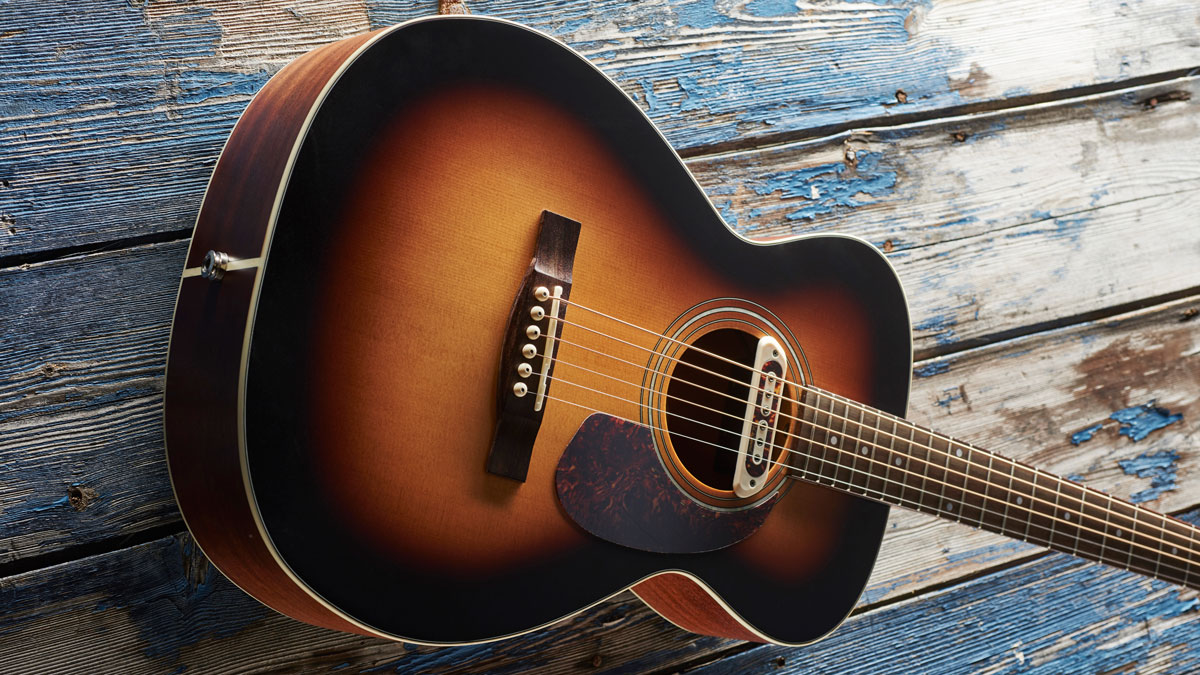MusicRadar Verdict
A solid choice for those on a budget.
Pros
- +
Good playability.
- +
Installed soundhole pickup offers something different.
Cons
- -
Action was a little buzzy.
MusicRadar's got your back
Guild’s new Troubadour model arrives at the same time as a solid wood, California-built model, the M-40; although both are quite different in build, they share the same inspiration.
The new M-40 is a comeback of sorts under a new name for Guild’s old F-20 - a bit of a gem in vintage parlour guitar circles from Guild’s folk heydays of the 60s and 70s. In terms of nut width, the M-240E is actually closer to the old F-20s than the new M-40 - but this guitar has something unique: it’s one of the only guitars we’ve seen anywhere rocking a soundhole pickup out of the box.
The Guild balances the modern with the traditional; the curves, minimal-striped purfling and the sunburst say old Americana, but the satin finish says ‘modern’. The mahogany neck shade doesn’t match the body but other than that cosmetic gripe it’s a tidy build with 14:1 ratio open-gear tuners that are reassuringly smooth.
The action on our test model is very low with the provided gauge .012 D’Addario strings, and it gets a bit buzzy when tuning down. The upside is a fast action in standard with a tension that’s easy on your digits for bends too. This combination with the guitar’s light weight are freeing compared to a larger-bodied dreadnought.
With bright mids coming through, it’s a natural voice for country, folk and blues with the action and string spacing proving good for more delicate fingerstyle, but light on the darker and richer low-end spectrum.
With bright mids coming through, it’s a natural voice for country, folk and blues
Opening up for strumming is the most fun though with the highs carrying a pleasing, slightly phased quality in chord work.
The removable Tone Boss soundhole pickup is something tangibly different for anyone who is used to onboard piezo systems. As it’s passive, you won’t get the higher output as a piezo or active magnetic pickup and with no onboard tone controls, an external preamp or acoustic amp will be needed for those who want more control over their tone.
Want all the hottest music and gear news, reviews, deals, features and more, direct to your inbox? Sign up here.
But there’s a pleasing roundness when we plug into our Laney A1+ acoustic combo on flat 12 o’clock settings, without the kind of harsh highs or plasticky compression that can hinder piezos in the lower budget end of the market.
Both Guild and DeArmond’s video demos of this guitar show it being played with overdrive, and you could even plug it into a standard guitar amp if you want added edge. That flexibility on the electro side makes it a gig-ready option for those turned off by piezo possibilities.

Rob is the Reviews Editor for GuitarWorld.com and MusicRadar guitars, so spends most of his waking hours (and beyond) thinking about and trying the latest gear while making sure our reviews team is giving you thorough and honest tests of it. He's worked for guitar mags and sites as a writer and editor for nearly 20 years but still winces at the thought of restringing anything with a Floyd Rose.
